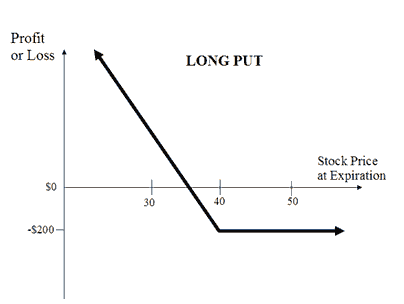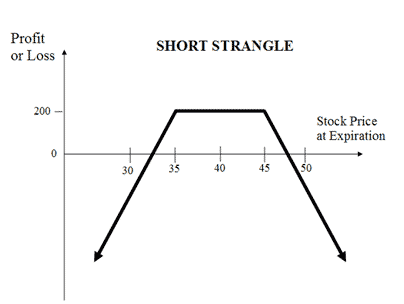 Zerodha (Trading Account)
Zerodha (Trading Account)
FREE Equity Delivery and MF
Flat ₹20/trade Intra-day/F&O
 Zerodha (Trading Account)
Zerodha (Trading Account)
FREE Equity Delivery and MF
Flat ₹20/trade Intra-day/F&O

|
|
Compare Long Put and Short Strangle (Sell Strangle) options trading strategies. Find similarities and differences between Long Put and Short Strangle (Sell Strangle) strategies. Find the best options trading strategy for your trading needs.
| Long Put | Short Strangle (Sell Strangle) | |
|---|---|---|
 |
 |
|
| About Strategy | A Long Put strategy is a basic strategy with the Bearish market view. Long Put is the opposite of Long Call. Here you are trying to take a position to benefit from the fall in the price of the underlying asset. The risk is limited to premium while rewards are unlimited. Long put strategy is similar to short selling a stock. This strategy has many advantages over short selling. This includes the maximum risk is the premium paid and lower investment. The challenge with this strategy is that options have an expiry, unlike stocks which you can hold as long as you want. Let's assume you are bearish on NIFTY and expects its price to fall. You can deploy a Long Put strategy by buying an ATM PUT Option of NIFTY. If the price of NIFTY share... Read More | The Short Strangle (or Sell Strangle) is a neutral strategy wherein a Slightly OTM Call and a Slightly OTM Put Options are sold simultaneously of same underlying asset and expiry date. This strategy can be used when the trader expects that the underlying stock will experience a very little volatility in the near term. It is a limited profit and unlimited risk strategy. The maximum profit earn is the net premium received. The maximum loss is achieved when the underlying moves either significantly upwards or downwards at expiration. A net credit is taken to enter into this strategy. For this reason, the Short Strangles are Credit Spreads. The usual Short Strangle Strategy looks like as below for NIFTY current index value at 10400 (NIFTY S... Read More |
| Market View | Bearish | Neutral |
| Strategy Level | Beginners | Advance |
| Options Type | Put | Call + Put |
| Number of Positions | 1 | 2 |
| Risk Profile | Limited | Unlimited |
| Reward Profile | Unlimited | Limited |
| Breakeven Point | Strike Price of Long Put - Premium Paid | two break-even points |
| Long Put | Short Strangle (Sell Strangle) | |
|---|---|---|
| When to use? | A long put option strategy works well when you're expecting the underlying asset to sharply decline or be volatile in near future. |
The Short Strangle is perfect in a neutral market scenario when the underlying is expected to be less volatile. |
| Market View | Bearish When you are expecting a drop in the price of the underlying and rise in the volatility. |
Neutral When you are expecting little volatility and movement in the price of the underlying. |
| Action |
Let's assume you're Bearish on Nifty currently trading at 10,400. You expect it to fall to 10,000 level. You buy a Put option with a strike price 10,000. If the Nifty goes below 10,000, you will make a profit on exercising the option. In case the Nifty rises contrary to expectation, you will incur a maximum loss of the premium. |
Sell 1 out-of-the-money put and sell 1 out-of-the-money call which belongs to same underlying asset and has the same expiry date. |
| Breakeven Point | Strike Price of Long Put - Premium Paid The breakeven is achieved when the strike price of the Put Option is equal to the premium paid. |
two break-even points A strangle has two break-even points. Lower Break-even = Strike Price of Put - Net Premium Upper Break-even = Strike Price of Call+ Net Premium" |
| Long Put | Short Strangle (Sell Strangle) | |
|---|---|---|
| Risks | Limited The risk for this strategy is limited to the premium paid for the Put Option. Maximum loss will happen when price of underlying is greater than strike price of the Put option. |
Unlimited The maximum loss is unlimited in this strategy. You will incur losses when the price of the underlying moves significantly either upwards or downwards at expiration. Loss = Price of Underlying - Strike Price of Short Call - Net Premium Received Or Loss = Strike Price of Short Put - Price of Underlying - Net Premium Received |
| Rewards | Unlimited This strategy has the potential to earn unlimited profit. The profit will depend on how low the price of the underlying drops. |
Limited For maximum profit, the price of the underlying on expiration date must trade between the strike prices of the options. The maximum profit is limited to the net premium received while selling the Options. Maximum Profit = Net Premium Received |
| Maximum Profit Scenario | Underlying goes down and Option exercised
|
Both Option not exercised |
| Maximum Loss Scenario | Underlying goes up and Option not exercised
|
One Option exercised |
| Long Put | Short Strangle (Sell Strangle) | |
|---|---|---|
| Advantages | Unlimited profit potential with risk only limited to loss of premium. |
The strategy offers higher chance of profitability in comparison to Short Straddle due to selling of OTM Options. |
| Disadvantage | You may incur 100% loss in premium if the underlying price rises. |
Limited reward with high risk exposure. |
| Simillar Strategies | Protective Call, Short Put, Long Straddle | Short Straddle, Long Strangle |

Add a public comment...

FREE Intraday Trading (Eq, F&O)
Flat ₹20 Per Trade in F&O
|
|